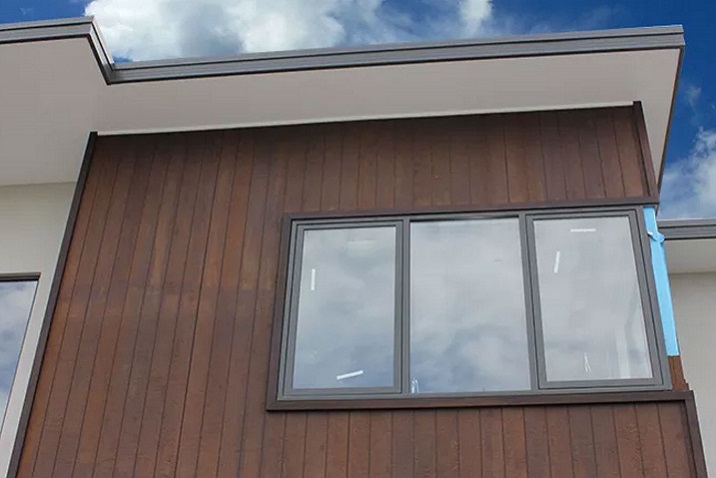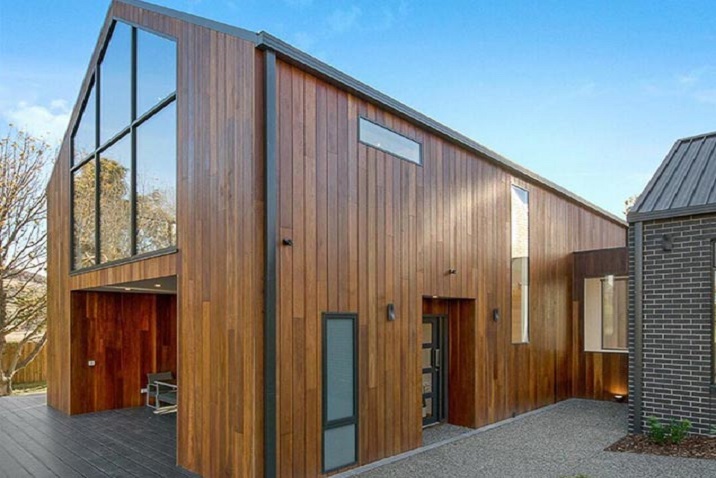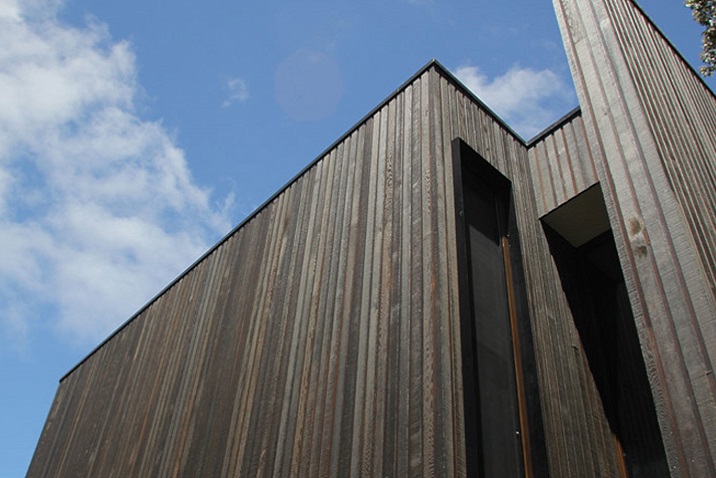What is cladding?
Cladding can broadly be defined as material that is attached to a building’s interior or exterior. It has two purposes - it is decorative and functional. In terms of aesthetic appeal, cladding is a great way for a home to make a first impression. The addition of cladding has the rare ability to turn an otherwise boring suburban house into a thing of real beauty.
But it's not all about good looks. High-quality cladding works as an insulator and safeguards against structural deterioration. On top of that, it protects against sun, wind, and rain, as well as fire, moisture, pets and pollution.
What is timber cladding?
Naturally enough, given the above definition, timber cladding is simply cladding that is made out of timber. To the untrained eye, wood cladding looks very similar to traditional timber floorboards. It generally has about the same measurements as floorboards, though unlike floorboards, it is not produced with a tongue and groove profile.
The attractions and benefits of timber cladding are many. Available in a broad range of designs and styles, timber cladding brings with it the timeless texture and appeal of a natural product. Quite simply, it has the ability to transform the look of your house. On top of that, it is a good insulator and it represents a very versatile cladding choice. Lightweight and easy to work with, its installation can be vertical, horizontal, or diagonal.
Is timber cladding the right choice for you?
When it comes to cladding, consumers are frankly spoilt for choice. In terms of cladding material, the choices include everything from natural stone, fake timber, concrete, fiberboard, and fiber cement to aluminium, steel, brick, vinyl, metal, composite materials, and even glass.
Wood cladding is just one choice among many. While, as mentioned above, it has many advantages and benefits, it is not without its drawbacks. On the negative side, most timber cladding needs to be either painted or stained every three to five years to maintain its natural appeal and protect it from extremes of weather. In contrast, many alternatives need virtually no maintenance at all.
In addition, timber or wood obviously represents a fire risk. This risk varies according to product, but most timber cladding products, even when painted or sealed, do represent at least some level of fire risk.
That said, the benefits of wood cladding are many. Regardless of if you live in Melbourne, Sydney, or Perth, choosing whether or not it is the right product for you comes down to personal preference. In this sense, deciding factors generally include things like price, thermal performance, and suitability for local climatic conditions. The good news is that there are several timber cladding products available in Australia that meet these requirements and satisfy the personal preferences of homeowners around the country.
Is timber cladding installation a DIY job?
As mentioned, timber cladding is lightweight and easy to install. It is a job that most competent DIYers should be able to handle without too many problems.
How much does timber cladding cost?
In terms of labour, costs vary greatly across Australia, but you can expect to pay somewhere in the range of $30 an hour to $60 an hour for this job. In terms of the actual timber cladding products, again there is a broad range of prices, depending on individual products and also timber species. At the low range you can expect to pay between about $3.50 to $7 per linear meter of Tight Not Pine wood cladding, then at the high range, the price for Tallowwood timber cladding is around $9 - $12 per linear meter.
Timber cladding Australia - a selection of some of the best timber cladding on the market:

1. Boral hardwood timber cladding
Suitable for both commercial and residential applications, Boral hardwood timber cladding delivers the perfect mix of durability and beauty, along with bush fire resistance of up to BAL 29. Able to be fixed to either timber or steel framework systems, this timber cladding is resistant to termites as well as seismic movements. To avoid weathering and achieve maximum longevity, it is recommended that this cladding be treated with a surface coating or painted.
Click here for further information.

2. Natural Edge weatherboards
Produced using a patented sawing method that results in perfect quarter sawn boards, Natural Edge weatherboards are recommended for use as external cladding on everything from houses and apartments to sheds, visitors’ centres and universities. Boasting a seamless appearance, these products are supplied unseasoned and therefore they deliver the extra benefit of shrinking with no distortion and only minimal checking on their exposed faces.
Click here for further information.

3. Vulcan Cladding
A premium weatherboard cladding product, Vulcan cladding from Abodo is available in range of modern profiles including level back and vertical shiplap. This cladding is made from the company’s thermally modified plantation timber and is FSC certified. As such those who choose to purchase this beautiful product can enjoy all that it has to offer in terms of durability, design detail and weathering, in the knowledge that it has been ethically crafted to the highest standards of sustainability.
Click here for more information.

4. Weathertex Hardwood Fibreboard Cladding
Weathertex cladding product belongs to a range that is the first of its kind to receive Greentag Platinum accreditation. On top of that, it is produced with no chemical additives and is therefore suitable for both internal and external applications. Made from Australian hardwood and natural wax it even boasts the claim of a ‘better than zero carbon footprint’. Further features include termite resistance and 25-year guaranteed protection against rot, split or crack issues. Installation is simple enough for DIYers and it is supplied either natural or primed ready for painting or coating.
Click here for further information.

5. Spotted Gum cladding
Available now from Nationwide Timber, spotted gum cladding combines attractive lighter colors and shades with impressive hardness and durability. A native species from the NSW coast and Southern Queensland, this product is proving extremely popular among homeowners around Australia. Spotted gum cladding has a Janka rating of 11 and is available with BAL ratings of 12.5, 19, or 29.
Click here for further information

6. Cedar Cladding from Everist Timber
Well-known across the industry as being lightweight and very easy to work with, Cedar cladding Is also attractive, versatile, and durable. Available in a range of colors including light browns and light reds, these products are suitable for use with black components and are stable in most weather conditions. For a fresh modern look, the supplier recommends the use of oils or stains or alternatively the product may be left to weather naturally. As the accompanying photo shows, it has a charred appeal.
Click here for further Information.

